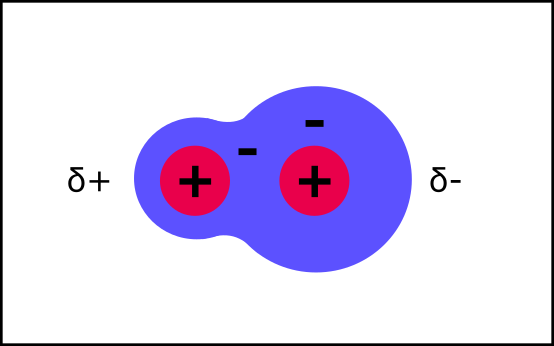Haemoglobin’s oxygen dissociation curve isn’t fixed in place. It can move to different positions depending on the pH.
The pH in the red blood cell is affected by the partial pressure of carbon dioxide (remember how it behaves during transport?). High levels of carbon dioxide indicate that the body is active and needs more oxygen.
Active muscles also produce lactic acid through anaerobic respiration, which further reduces the pH.
A low (acidic) pH has the effect of moving the oxygen dissociation curve to the right. This means that any any given partial pressure of oxygen, this high-CO2, right-shifted curve is lower than before.
It’s not enormously intuitive, but you can see this clearly if you draw a line vertically up through the graph at a chosen partial pressure of oxygen. Look at where it meets each curve. It will hit the right-shifted curve before it hits the original curve, because the right-shifted, high-CO2 curve will have lower oxygen saturation at this (or any) patial pressure.
That means that at any partial pressure of oxygen, the high-CO2 haemoglobin has a lower affinity for oxygen than before, and is more likely to release its oxygen into the tissues.
Reducing haemoglobin’s affinity for oxygen at high partial pressures of carbon dioxide helps it release oxygen in the active tissues that need it most.
Fetal Haemoglobin and Myoglobin
Haemoglobin sometimes needs to pass its oxygen to other, similar oxygen-binding molecules. It needs to pass it to myoglobin for oxygen storage in muscles, and to fetal haemoglobin to pass oxygen to the growing foetus.
These similar-but-different molecules have their own oxygen dissociation curves. If oxygen is to be passed to them, they must have a higher affinity for oxygen than normal haemoglobin. And this is what is seen. When you look at their curves, they are left-shifted with respect to haemoglobin. Draw a line up from any chosen partial pressure of oxygen, and it will hit the curve for normal haemoglobin first, because the fetal haemoglobin or myoglobin will have higher oxygen saturation.
This means that at any partial pressure of oxygen, they have a higher affinity for oxygen, and are able to bind oxygen that has been released by the normal haemoglobin.
Multiple Choice Questions (answers below):
What is the primary function of haemoglobin in the bloodstream?
a) Transporting nutrients
b) Transporting oxygen
c) Transporting waste products
d) Transporting hormones
Which enzyme catalyzes the reversible conversion of carbon dioxide and water into carbonic acid?
a) Carbon dioxide synthase
b) Carbonic anhydrase
c) Haemoglobinase
d) Bicarbonate dehydrogenase
Which acid is formed when haemoglobin binds with a proton?
a) Carbonic acid
b) Haemoglobinic acid
c) Hydrochloric acid
d) Sulfuric acid
Which ions move into red blood cells when bicarbonate ions diffuse out?
a) Sodium
b) Potassium
c) Chloride
d) Hydrogen
What effect does an increase in carbon dioxide concentration have on the oxygen dissociation curve?
a) It shifts the curve to the left
b) It shifts the curve to the right
c) It has no effect on the curve
d) It decreases the steepness of the curve
Multiple Choice: answers
1. Answer: b) Transporting oxygen
2. Answer: b) Carbonic anhydrase
3. Answer: b) Haemoglobinic acid
4. Answer: c) Chloride
5. Answer: b) It shifts the curve to the right
How did you do?
These questions were just a quick test to see if you can remember some of the key points. If you struggled a bit then go back and review the content. But also check that you really understand what’s going on with this topic. The exam board will intentionally phrase the questions to make it as difficult as possible for anyone to answer by having just memorised key facts.
When you’re ready, try some real exam questions:




































